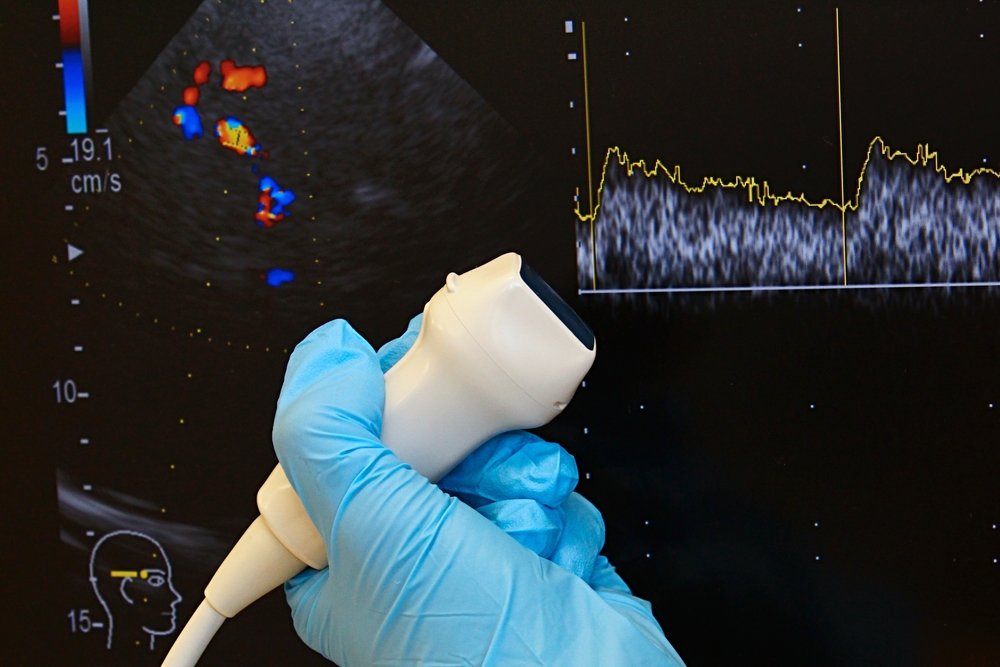Doppler

Understanding Doppler: Types, Purpose, and Preparation for Radiology Exam
You may have been recommended for a Doppler exam, but do you know what it entails? Doppler is a type of ultrasound imaging that measures blood flow patterns through blood vessels. It is commonly used to detect blockages, clots, or abnormalities in circulation. In this blog post, we will explain the different types of Doppler exams, when they are needed, and what you can expect before, during, and after the procedure.
Types of Doppler Ultrasonography
There are two primary types of Doppler ultrasonography: color Doppler and pulsed-wave Doppler. Color Doppler is the most commonly used method of measuring blood flow dynamics. It displays the velocity and direction of blood flow using different colors on a monitor. Pulsed-wave Doppler, on the other hand, provides information about blood velocity at a specific location. It is used to measure the speed of blood flow through small vessels or arteries.
When Do You Need a Doppler Exam?
A Doppler exam may be recommended by your doctor if you have symptoms of poor circulation or blood clots. It can also be used to diagnose conditions such as varicose veins, deep vein thrombosis, or peripheral artery disease. If you have an upcoming surgical procedure, your doctor may also order a Doppler to check for blockages or vascular abnormalities. Your doctor will determine if you need a Doppler exam and which type is best suited for your particular condition.
How to Prepare for a Doppler Exam
The preparation for a Doppler exam depends on the type of test you’ll have. For a lower extremity or abdomen Doppler, you may be asked to wear comfortable clothing and avoid eating for a few hours before the exam. For certain exams, such as a carotid or transcranial Doppler exam, you may need to avoid caffeine or smoking for as long as 24 hours before the test. It is important to follow the instructions given by your doctor or radiologist to ensure accurate results.
What to Expect During and After the Exam
During a Doppler exam, a technician will apply gel onto the skin over the area being examined and use a transducer to emit sound waves into the body. You may feel pressure as the technician presses the transducer against your skin to get better images. The exam may take between 30 minutes to an hour, depending on the type of Doppler being performed. After the test, you can return to your normal activities immediately. Your doctor will usually review the results with you within a few days.
A Doppler exam is a non-invasive and safe way to assess the blood flow in your body. Your doctor may order one if they suspect circulatory problems, blockages, or other abnormalities. By understanding the types of Doppler exams, preparing appropriately, and knowing what to expect during the procedure, you can be fully prepared for your radiology exam. If you have any questions or concerns about your upcoming Doppler exam, be sure to discuss them with your doctor.

Less Movements Just as Effective In Ultrasound for Pancreatic Biopsies
A new Japanese study shows that fewer to-and-fro movements during an endoscopic ultrasound-guided fine-needle biopsy (EUS-FNB) are equally effective when performing a pancreatic tumor biopsy. Gastrointestinal Endoscopy published

Increased Use of CCTA Cost Effective for Diagnosing Coronary Artery Disease
Radiologic screening opportunities are on the increase in the field of cardiology. A new retrospective study examined the results in the United Kingdom of

New FDA Recommendation for Women with Dense Breast Tissue
The U.S. Food and Drug Administration updated their mammography standards in early March to require imaging providers to inform women that they have dense
